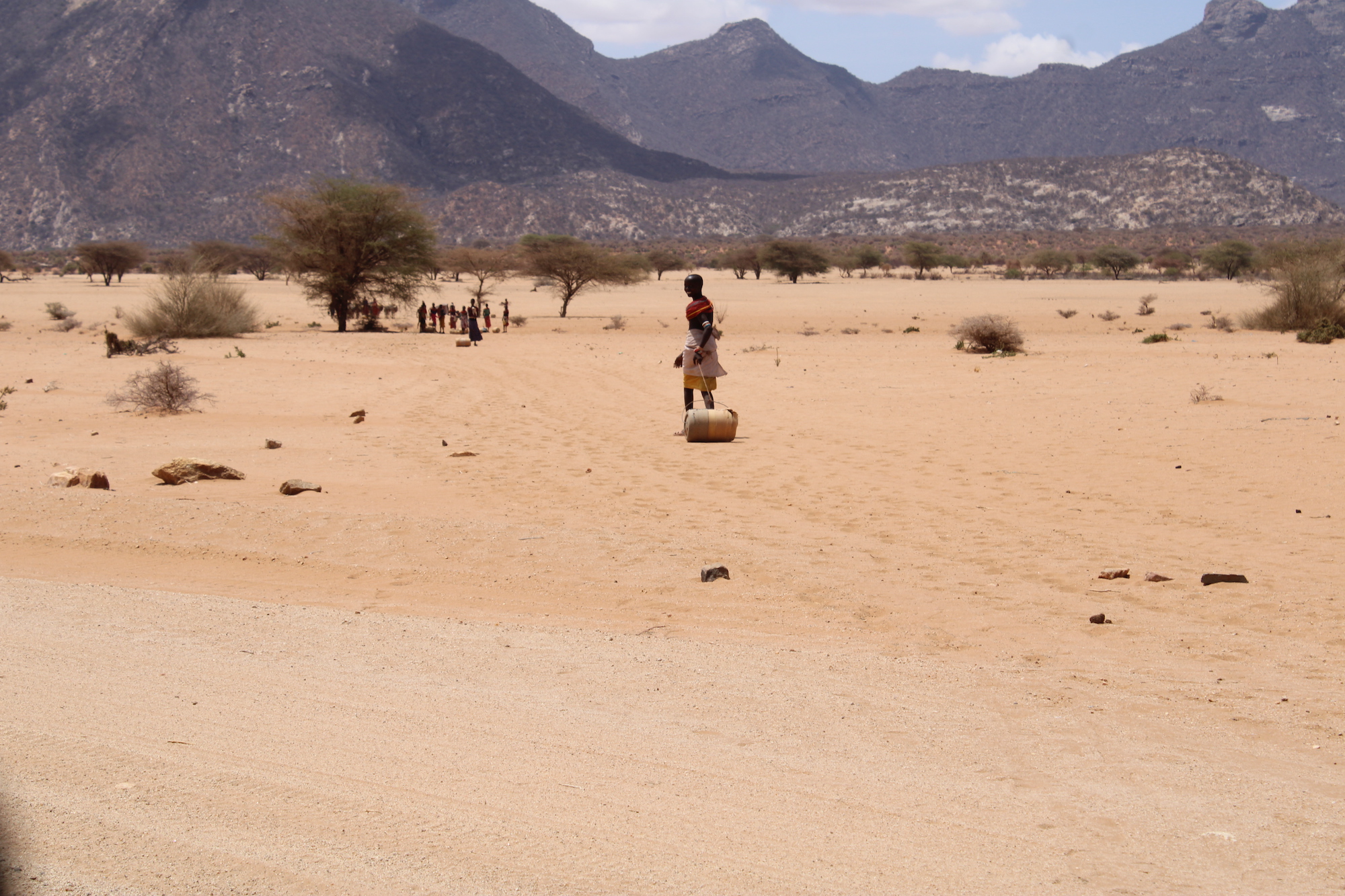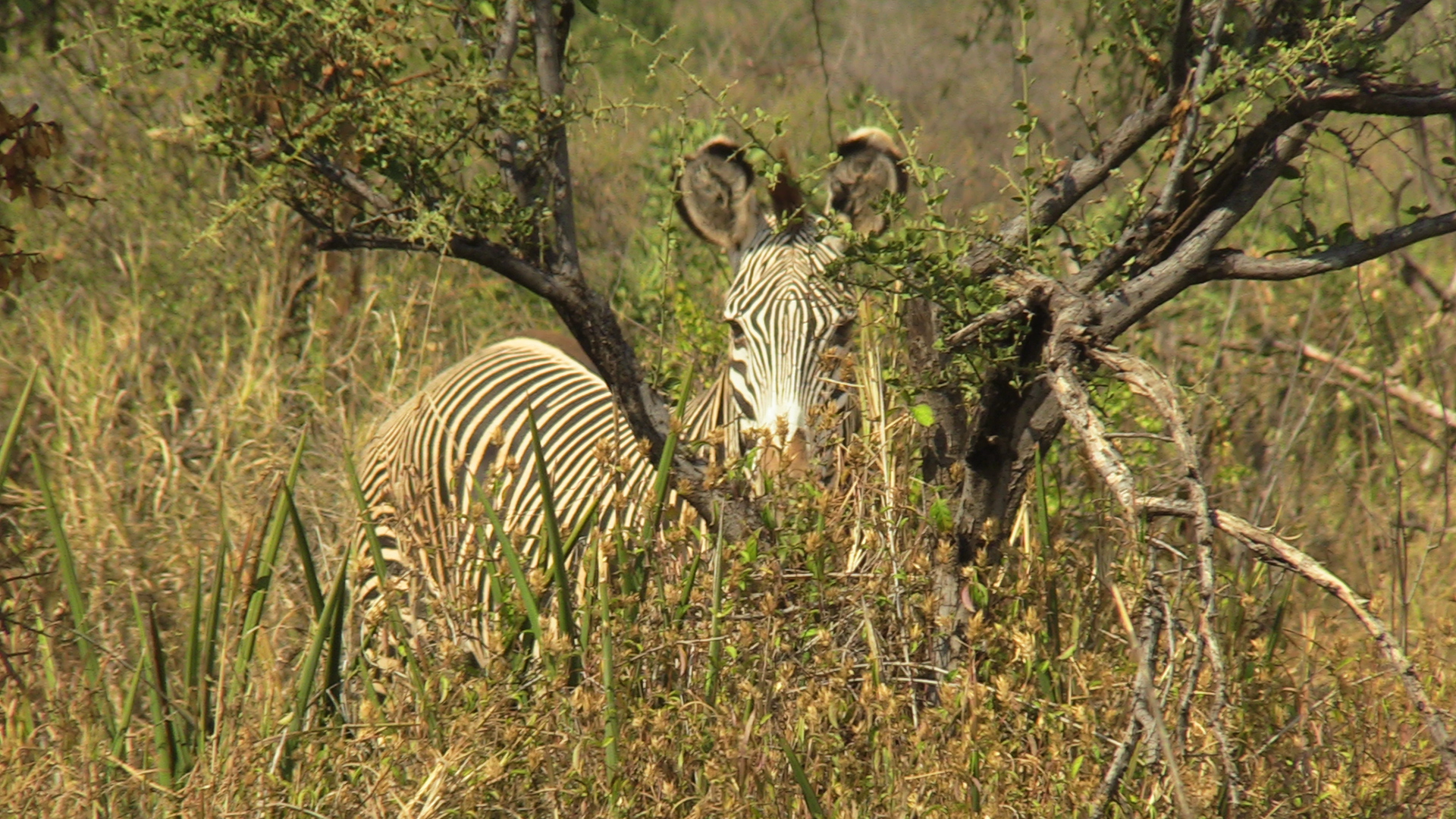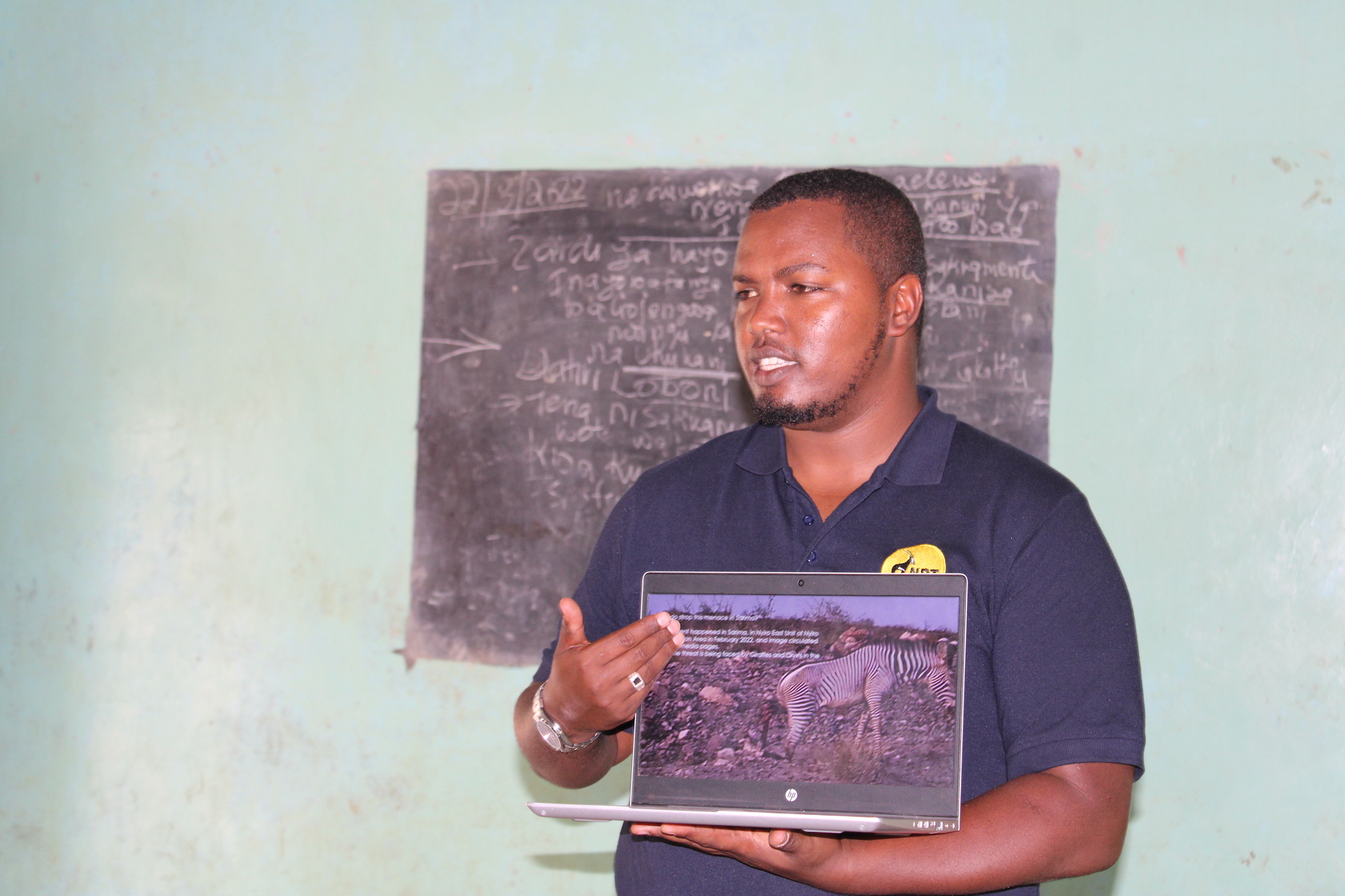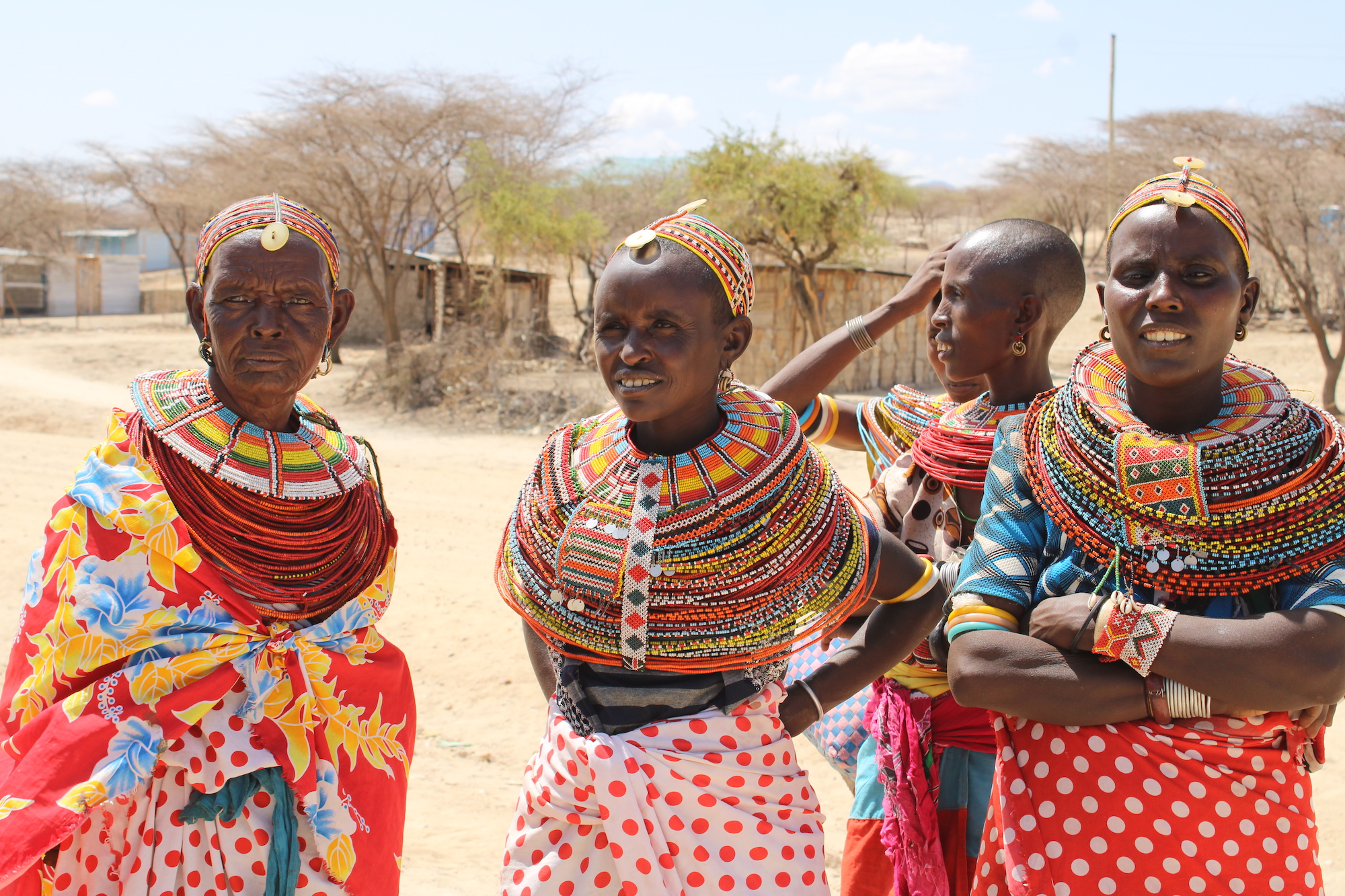
13 May Drought increases poaching of endangered zebras in Kenya
As poaching takes its toll on the population of Kenya’s Grevy’s zebras, a prolonged drought has now been added to the list of threats against this endangered species. Lenah Bosibori investigates

Grevy’s zebras are among the most endangered species globally, due to their striking appearance. Photo: Lenah Bosibori
In February, two Grevy’s zebras – one of Africa’s most endangered large mammals – were killed in Sarima, Nyiro Conservancy bordering Marsabit, and Lake Turkana, triggering panic among conservationists in northern Kenya.
Joel Oronyo, who works with Grevy’s Zebra Trust Samburu North, recounts the ordeal: “We had reports that poaching had happened at Sarima in Nyiro Conservancy. We responded quickly, but when we reached there we found two zebras injured, one on the legs and another one in the stomach. We couldn’t do much as they were already badly injured,” said Oronyo.
Oronyo immediately called his team from Kenya Wildlife Service (KWS), who responded quickly to try and save the iconic zebras, which later succumbed to the injuries.
Found almost exclusively in northern Kenya, the Grevy’s zebra remains endangered, according to Grevy’s Zebra Trust. This unique species of zebra is known for its striking, tall appearance, thin stripes and elegant gait. In the late 1970s, over 15,000 Grevy’s zebras roamed in the wild. Hunting and poaching drastically reduced the population over the years, and the 2016 Great Grevy’s census results indicated that Kenya was home to 2,350 Grevy’s zebras, 90% of the world’s population.
According to conservation organisation Grevy’s Zebra Trust, recent estimates indicate that only 3,042 are alive, representing an 80% decline in their population globally. In Kenya, the 2018 estimate was 2,812 Grevy’s zebras (a small increase from 2016) and there are 230 in Ethiopia.
In February, the rangers were not able to prosecute the poachers because the poachers were many and armed, compared to the number of rangers from KWS and Grevy’s Zebra Trust.
“When we started searching for the poachers in the bushes, we found them feasting on the meat, meaning they had already killed some. Since we were few we went back and were keen to avoid conflicts,” said Oronyo.
“It was not a good situation at that moment and it was so painful that animals are being killed in these remote areas whereby it is hard to access and monitor every wild animal during this drought moment since they are on the move looking for pasture and water.”

Dida Fayo, the Northern Rangelands Trust (NRT) lead in Samburu North, displaying a photo of a Grevy’s zebra that was injured in Sarima Samburu North and later succumbed to its injuries. Photo: Lenah Bosibori
Poverty leads to poaching
Julius Leknit, the deputy director of programs at Grevy’s Zebra Trust, says the drought that started in 2021 has increased poverty, leading to more poaching.
“The local community kills the Grevy’s zebras for survival especially during this drought period when everyone is looking for critical resources which are pasture and water,” says Leknit.
Leknit says Grevy’s Zebra Trust has partnered with local communities in northern Kenya to conserve Grevy’s zebras in order to boost their numbers.
Grevy’s Zebra Trust employs 29 Grevy’s Zebra Scouts from seven different communities to monitor the zebras and foster positive attitudes towards species.
They also employ a team of 10 Grevy’s Zebra warriors from the local community who monitor approximately over 200 Grevy’s to raise awareness and provide protection to the species.
Their outreach to communities has created a large network of local support to disseminate conservation messaging and promote conservation action.
The issue of human-wildlife conflict has been rampant in northern Kenya, taking a toll on Grevy’s zebras, which are ranked among the most endangered species globally, according to Grevy’s Zebra Trust.

Illegal trade
Grevy’s zebra is one of Africa’s most endangered large mammals and is protected against illegal trade by the IUCN/SSC EquidSpecialist Group and the Convention on International Trade in Endangered Species of Wild Fauna and Flora (CITES). They are also legally protected in Ethiopia and since 1977 have been protected by a hunting ban in Kenya.
Justus Lesanjore, assistant conservancies’ coordinator in Samburu County, says the poaching incident in February happened due to the absence of a ranger whose only present colleague was overwhelmed by the unfolding crisis.
“We had a small gap at Sarima; one ranger who was manning that specific area went missing; he left work with no reasons leaving the area unattended but we have recruited another one to fill the gap,” Lesanjore says.
Mohamed Salat, a senior ranger with Kenya Wildlife Service South Horr Nyiro Ward, said the incident affected the rangers badly.
“We felt like going beneath our beds; we combined our efforts and looked for them. We managed to find the poachers but we were not able to arrest them because they were so many,” he said.
“It is possible that sometimes we find ourselves in a situation that we cannot control,” adds Salat.
He noted that wildlife poaching is sporadic and depends on certain circumstances.
“During the drought season in 2021, we had five Grevy’s poached by the local community for their meat, but this time we don’t have the real numbers that have been lost to this heinous crime due to the prolonged drought period as compared to 2021,” says Lesanjore, the assistant conservancies’ coordinator in Samburu County.

The effects of the drought force women to stand in the sun waiting for well-wishers to donate food to them in Samburu North. Photo: Lenah Bosibori
Harsher punishment for criminals
Between 2017 and 2022, most suspects involved in wildlife crime against zebras were arrested with meat, according to #WildEye East Africa data collected by InfoNile in partnership with Oxpeckers Investigative Environmental Journalism. Fourteen crimes involving zebras were tracked within the time frame.
Amendments to the Wildlife Act 2013 that were passed in 2018, which is currently undergoing review, spell out new penalties for bushmeat hunting. “Dealing (sell, supply, purchase, distribute, transport and possess) in carcass or meat of any wildlife species” imposes a three years’ imprisonment with no option of fine payment.
Purchase of any meat or eggs of any wildlife species imposes a fine of up to Ksh 1 million or a jail term of 12 months, or both; however, a judge has discretion over the same. This is compared to the earlier Wildlife Conservation Management Act of 1976, where a person convicted of hunting any animal in a national park was subject to a fine ranging from 5000 Kenyan shillings (around US$58) to 20,000 shillings (around US$176), and/or imprisonment ranging from six months to three years, which could include corporal punishment.
Data tracked on #WildEye East Africa shows that between 2017 and 2021, the highest sentence given to anybody involved in crimes against zebras was 11 years’ imprisonment and in default Kshs. 2.2 million (around US$19,396.33). In this particular case, the suspect was found guilty of three crimes contrary to the Wildlife Act 2013. These included illegally killing a wildlife species, illegally dealing with wildlife meat, and illegal possession of a wildlife trophy.
On the contrary, the lowest sentence handed down to any suspect involved in zebra crimes during the same period was a fine of Kshs. 20,000 (around US$176) or five months’ imprisonment in default for being found guilty of illegal possession of a wildlife trophy, contrary to the Wildlife Act 2013.
Conservancies protect biodiversity
According to Leknit, Samburu North is a very beautiful landscape, only rivaled by the world-famous Maasai Mara game reserve located in the southeastern Kenyan plains.
Started in 2013 by the county government of Samburu, Nyiro conservancy is one of the biggest conservancies in the vast county, with 52 scouts protecting the biodiversity of the community.
“We started this conservancy because we realised that Samburu National Reserve was the only source of income for the community. We wanted the community to own and protect their natural resources,” says Lesanjore.
Conservancies provide their constituents with access to jobs, better services for community development and more business opportunities like the Northern Rangelands Trust Trading, which is a business accelerator for social and conservation impact enterprises.
However, drought has increased poverty even in the conservancies, leading to increased poaching.
“People around this area are hungry; even if we start to feed them we cannot manage all of them; we have limited resources, the reason they are killing the zebras,” Lesanjore adds.
The February poaching incident led to a consultative meeting on March 24 in Samburu, South Horr, to discuss the way forward on how the stakeholders could partner to reduce poaching cases.
The meeting brought together officials from Northern Rangelands Trust (NRT), Grevy’s Zebra Trust, conservancies coordinators, KWS, Samburu County and community rangers to explore innovative ways to enhance protection of the Grevy’s zebra.

Maintaining surrounding communities’ involvement has been crucial to protecting wildlife and the landscape in northern Kenya. Photo: Lenah Bosibori
Community conservancies
Northern Rangelands Trust is a conservation organisation that brings together 43 community conservancies across 10 counties, most of them from the northern and coastal parts of Kenya.
The counties are Samburu, Isiolo, Marsabit, Laikipia, Meru, Lamu, West Pokot, Baringo,Tana River and Garissa.
The organisation provides technical support, fundraising support, peace building services, and development of community conservancies, which are best positioned to enhance local people’s lives and conserve the natural environment.
“NRT came in to support the five new conservancies that include Baragoi, Nyiro, Ltungai-Malaso, Ndoto and Kirisia-Nkoteiya conservation areas created by the county government of Samburu,” says Dida Fayo, the NRT lead in Samburu North.
The conservancies were started in 2013 by the Samburu county government to improve the livelihoods of the community and to enhance protection of the environment as well as foster security initiatives.
A wildlife conservancy is land managed by an individual landowner, a body or corporate, group of owners, or a community for purposes of wildlife conservation and other compatible land uses to better livelihoods. They have helped the community to protect their own biodiversity while receiving some income from land rent and tourism.
“Samburu North has for decades grappled with poaching, resource-based conflicts that have escalated against a backdrop of climate change,” says Fayo.
“If there is human-to-human conflict then it automatically translates to human wildlife conflict. If we humans don’t have peace among ourselves then we can’t expect us to have peace with wildlife,” adds Fayo.

Plain land showing the effects of a prolonged drought in Samburu North Nyiro conservation area. Photo: Lenah Bosibori
Human-wildlife conflict
The consultative meeting noted that poaching was mainly driven by a lack of awareness and knowledge of the wildlife and their benefits among local communities, while drought was found to be the leading cause of human wildlife conflict.
Livestock continue to migrate in the pastoral areas due to declining forage and water brought by the dry season, resulting in conflict among communities over rangeland resources, according to Kenya | Famine Early Warning Systems Network.
On September 8 2021, President Uhuru Kenyatta declared drought affecting parts of the country a national disaster. Kenya’s arid and semi arid lands, which include the Rift Valley, Eastern, Northeastern and Coast provinces, were most affected.
The drought has affected both livestock and wild animals. Due to starvation, disease, and long trekking distances, declining livestock health has resulted in widespread livestock deaths in pastoral counties. In Marsabit, up to 9% of livestock herds are estimated to have died during the 2021 drought.
While addressing the national assembly’s committee on finance, Najib Balala, the cabinet secretary for Tourism and Wildlife, said that Kenya lost 62 elephants due to drought in the months of August and December 2021.
The population of zebras has also been affected. According to #WildEye East Africa in April 2021, authorities acting on an intelligence tip-off in Kajiado managed to waylay David Musyimi and Mwendo Mumba while in possession of zebra and dik-dik meat. They also recovered two knives and a machete used by the suspects to kill the animals. They were released with a bond of Kshs 300,000 (USD $2,596) with a surety amount.
The loss of livestock, below-average milk production, and declining goat-to-maize terms-of-trade across the northern and eastern pastoral areas are resulting in households facing Crisis (IPC Phase 3) and Emergency (IPC Phase 4) food insecurity outcomes. With around 11% of the 2021 Kenya Drought Appeal funded, further assistance is likely needed to save pastoral livelihoods during the forecast below-average 2022 March-May long rains.
In addition, the number of rangers and scouts are few in the area and whenever drought strikes, animals find themselves in the crosshairs of herders and farmers as they compete for dwindling pasture and water.
Melako Conservancy in Northern Kenya (546,777ha) is the largest community conservancy in Kenya compared to the 365-square-kilometer Laikipia Nature Conservancy (aka Ol Ari Nyiro).
KWS is trying hard to dig some shallow wells that wild animals can access to quench their thirst even as it emerged that greater awareness, additional KWS camps in Kawap area, robust stakeholder engagement, refresher courses for rangers and enhanced patrols by KWS rangers were an imperative.
Support for development and production of this story came from InfoNile, in partnership with Oxpeckers Investigative Environmental Journalism, with funding from the Earth Journalism Network. Additional reporting and editing by Sharon Atieno and Annika McGinnis at InfoNile. Data visualization by Sharon Atieno. This investigation was published by TalkAfrica here, and in English and Kiswahili by InfoNile here and here.
You can follow environmental crime incidents in the region on our #WildEye East Africa mapping tool
